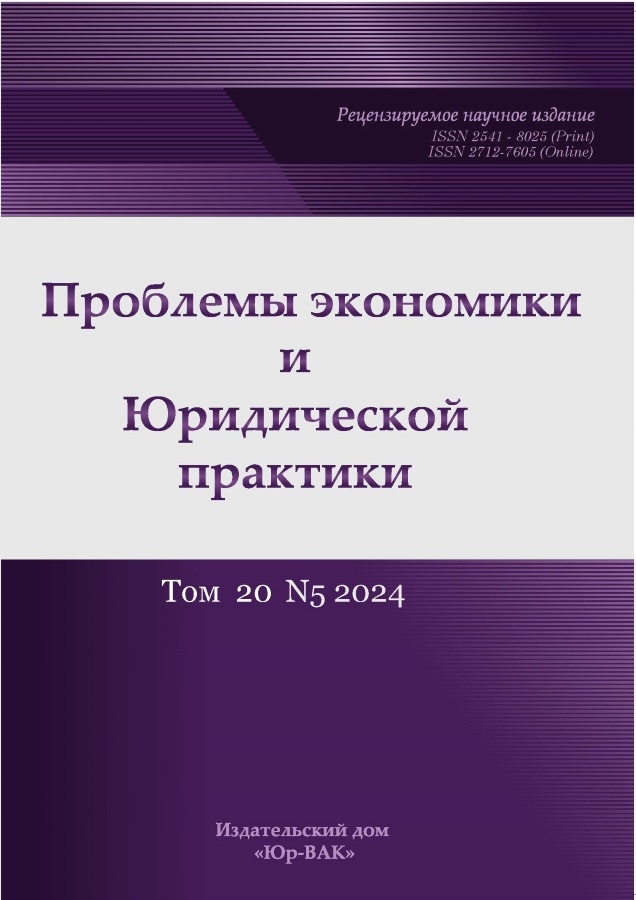The Policy of the Technological Security Provision in Belarus
- 作者: Moreva E.L.1
-
隶属关系:
- Financial University under the Government of the Russian Federation
- 期: 卷 20, 编号 5 (2024)
- 页面: 142-150
- 栏目: Regional and Sectoral Economics
- URL: https://journals.eco-vector.com/2541-8025/article/view/685628
- EDN: https://elibrary.ru/KNBNMU
- ID: 685628
如何引用文章
详细
The purpose of the research. The article analyzes the policy of the Republic of Belarus on ensuring national technological security: the approaches to define it and to assess its current state, place in the national system of socio-economic development and, in this regard, the relationship with other areas of state policy. The purpose of the research is to identify the groundwork developed in the country to strengthen its technological security for their use in Russia and relevant proposals. Conclusions. As a result of the conducted research, it was found out that despite significant progress in the formation of national technological security, it has not been possible to ensure it in Belarus, yet. However, it is advisable to apply the solid foundations created in this case in Russian practices: rely on a systematic approach, i.e., to link the achievement of technological security with other areas of state policy, as well as with the strengthening of the national innovation system, with the promising scientific and technological development of, and the identified ways of their effective economic development. The good opportunities to strengthen technological security by increasing the technological level of national economies provides the development of integration ties between our countries within the framework of their Union State.
全文:
作者简介
Eugenia Moreva
Financial University under the Government of the Russian Federation
编辑信件的主要联系方式.
Email: ELMoreva@fa.ru
ORCID iD: 0000-0001-6355-7808
SPIN 代码: 7145-5829
Scopus 作者 ID: 57203587867
Cand. Sci. (Econ.), Leader research associate, Institute for Financial and Industrial Policy; Financial University under the Government of the Russian Federation; Moscow, Russian Federation
俄罗斯联邦, Moscow参考
- Baynev V.F. Technological safety as a top strategic priority of the Union state of Belarus and Russia // National security and strategic planning. 2022. № 3(39). pp. 25–33. DOI: https://doi.org/10.37468/2307-1400-2022-3-25-33.
- Voitovich N. Scientific and technological security: the concept, essence and foreign experience of its provision // Scientific works of the Belarusian State Economic University. Issue 16, Minsk: Kolorgrad, 2023, 67–74.
- Mukha D. V. Topical issues of ensuring scientific and technological security of the republic of Belarus in the conditions of national economy innovative development // Bulletin of the Institute of Economics of the National Academy of Sciences of Belarus. —2022. —4. —pp. 21–42. https://doi.org/10.47612/27895122202242142/
- Presnyakova E. V. Contribution of high-tech industries to the sustainable development of Belarus / E. V. Presnyakova // Science and Innovation. —2020. —№ 3. —36–40.
- Akulava M., Guerrero M. Entrepreneurial gendered ambidexterity in Belarusian SMEs. // Technol Transf 48, 1919–1944 (2023). https://doi.org/10.1007/s10961-022-09936-y.
- Bauer M., Erixon F. Europe's Quest for Technology Sovereignty: Opportunities and Pitfalls» // Ecipe occasional paper 02/2020, Brussels: European Centre for International Political Economy.
- Braud A., Fromentoux G., Radier B., Le Grand O. The Road to European Digital Sovereignty with GAIA-X and IDSA, // IEEE Network, 2021, 35, 4–5.
- Edler J., Blind K., Kroll H., Schubert T. «Technology sovereignty as an emerging frame for innovation policy. Defining rationales, ends and means» // Research Policy 52, 2023, 104765.
- Holcombe, R. G. James M. Buchanan's constitutional project: past and future» // Public Choice, 2020, 183 (6), 371–387.
- Kluczewska K., Silvan, K. Post-Soviet Dependence with Benefits? Critical Geopolitics of Belarus’s and Tajikistan’s Strategic Alignment with Russia. // Geopolitics, 2024, 1–38. https://doi.org/10.1080/14650045.2024.2368621.
- Laplane A., Mazzucato M. Socializing the risks and rewards of public investments: Economic, policy, and legal issues. // Research Policy 2020, 2, 100008.
- Markard J. The life cycle of technological innovation systems. Technol. Forecast. Soc. Chang. 2020, 153, 119407.
- Miller B. Is Technology Value-Neutral? // Science, Technology, & Human Values, 2021, 46, 53-80.
- Mueller M. Against Sovereignty in Cyberspace // International Studies Review, 2020, 22, 779–801.
- Muscio A., Ciffolilli A. What drives the capacity to integrate Industry 4.0 technologies? Evidence from European R&D projects // Economics of Innovation and New Technology, 2020, 29, 169–183.
- Oztemel E., Gursev S. Literature review of Industry 4.0 and related technologies // Journal of Intelligent Manufacturing, 2020, 31, 127–182.
补充文件











